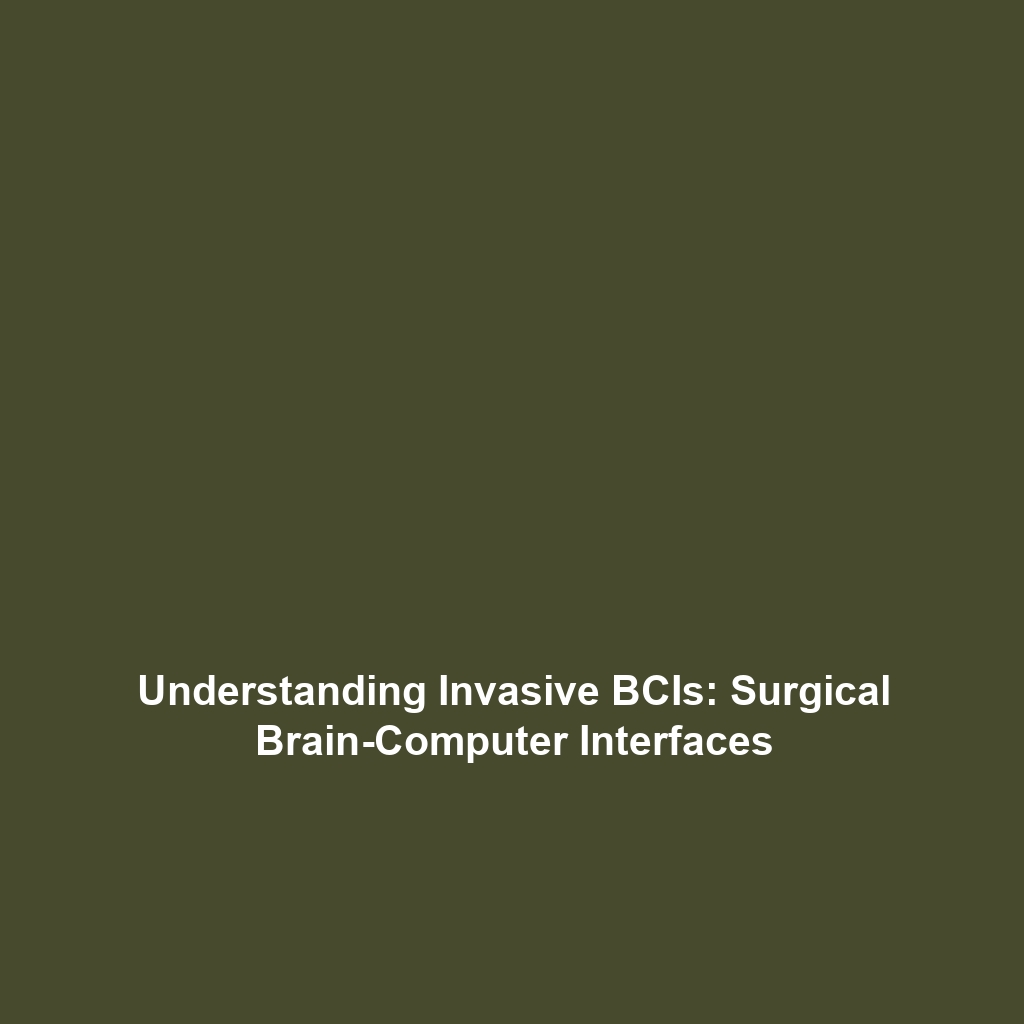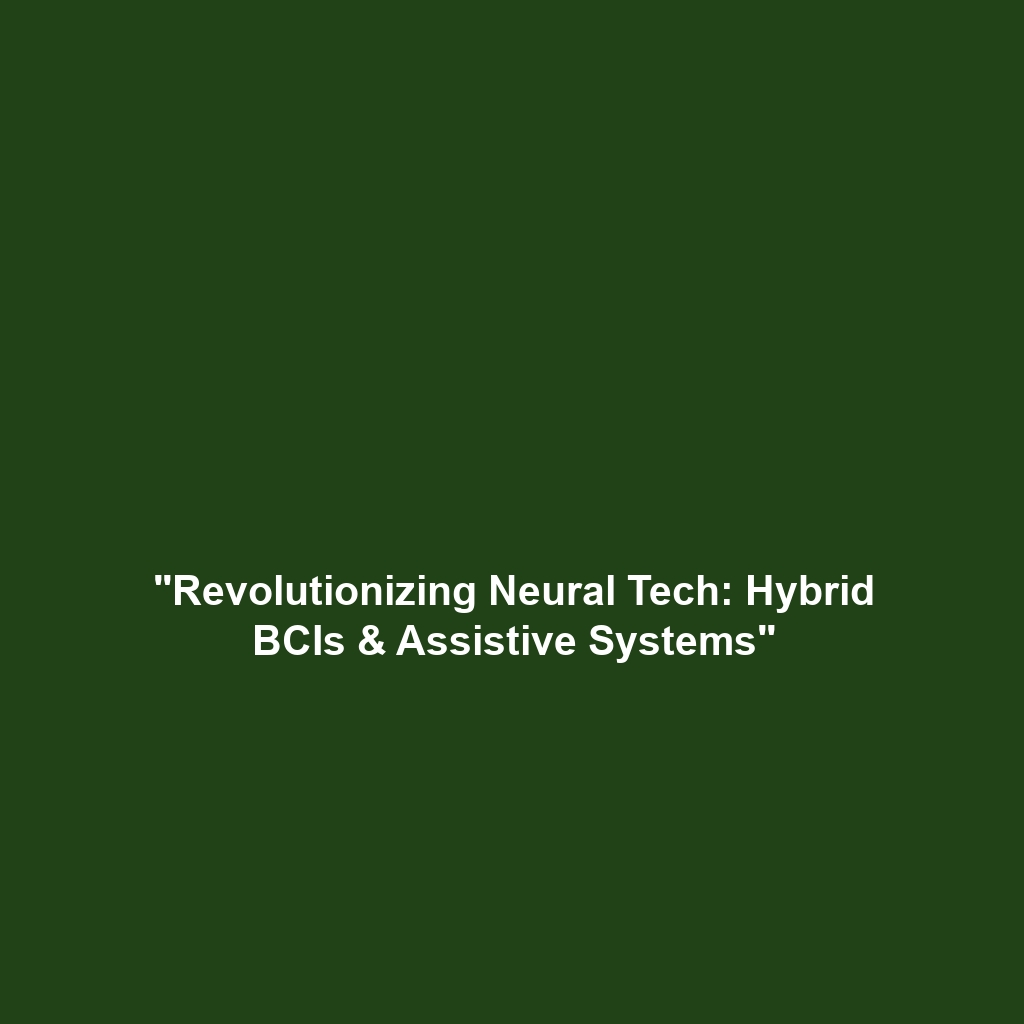Invasive Brain-Computer Interfaces: Definition and Implications
Introduction
Invasive brain-computer interfaces (BCIs) are a groundbreaking field in neuroscience and technology, representing a direct link between the human brain and external devices. These interfaces involve the surgical implantation of electrodes directly into the brain to record electrical activity, allowing for unprecedented communication between the brain and computers. The significance of invasive BCIs lies in their potential to transform medical treatments, rehabilitation, and enhance human capabilities. This article delves into the definition, applications, challenges, and future directions of invasive BCIs within the broader scope of brain-computer interfaces.
Key Concepts
In understanding invasive BCIs, several key concepts are essential:
- Electrode Implantation: Invasive BCIs require surgical procedures to position electrodes within specific brain regions. This allows precise recording of neuronal activity.
- Signal Processing: The recorded electrical activity is processed to decode brain signals, translating them into commands for various applications.
- Neural Decoding: Advanced algorithms are employed to interpret the electrical signals, enabling real-time communication between the brain and external devices.
Applications and Real-World Uses
Invasive BCIs have shown promise in several real-world applications:
- Medical Rehabilitation: They assist individuals with severe disabilities in regaining control over prosthetic limbs through thought.
- Neuroprosthetics: Invasive BCIs are used to restore lost functionalities in patients with neurological disorders.
- Brain Research: Researchers employ invasive BCIs in animal experiments to study brain functions and develop new treatment protocols.
Current Challenges
The field of invasive BCIs faces several notable challenges:
- Infection Risks: Surgical procedures introduce risks of infection and complications associated with implantation.
- Tissue Response: The brain’s response to foreign electrodes can lead to signal degradation over time.
- Ethical Considerations: Invasive procedures raise ethical questions regarding safety, consent, and the potential misuse of technology.
Future Research and Innovations
As technology advances, the future directions for invasive BCIs appear promising:
- Improved Materials: Research is focused on developing biocompatible materials to minimize the brain’s adverse reactions.
- Wireless Technologies: Emerging wireless solutions are reducing the need for external connections, enhancing the usability of invasive BCIs.
- Artificial Intelligence: AI-driven algorithms are expected to enhance the accuracy of neural decoding and interaction.
Conclusion
Invasive brain-computer interfaces represent a significant advancement in neuroscience, providing a direct pathway for interaction between the brain and external devices. Their applications range from medical rehabilitation to groundbreaking research, yet they come with challenges that need addressing. As research continues to unveil innovative solutions, the future of invasive BCIs looks bright, with the potential to enhance human capabilities and improve quality of life. For more information on related topics, be sure to explore articles on neuroprosthetics and AI in brain-computer interfaces.


